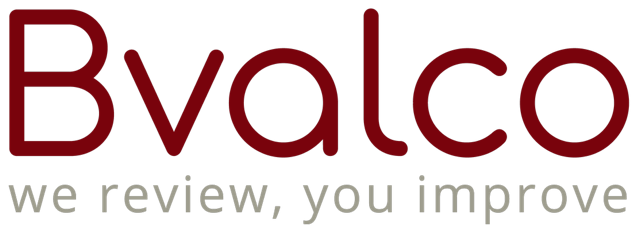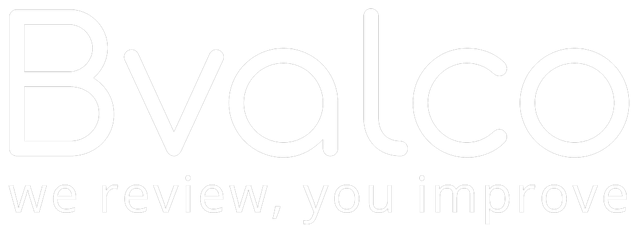Alison Gill is a behavioural psychologist, triple Olympian and the co-founder of Bvalco, a board evaluation consultancy focused on helping boards become fit for the future.
With the cabinet’s handling of the crisis being called ‘inept’, we look at why the current approach wouldn’t be allowed in a boardroom.
As we enter a second lockdown to avoid a death toll of more than 4,000 people a day, you don’t need to be an epidemiologist to understand why the cabinet’s strategy has been labelled inept.
However, strategy , be it the decision to reopen universities or ignore calls for a circuit break to stem the virus, is just one of the six elements of good governance leadership teams need to succeed. The other elements are the values and beliefs guiding effective decision-making, the culture in place to win stakeholder engagement, the process governing things like communication, and last but not least, having the right people in the right roles.
Which got us thinking: what recommendations would we put forward if we were to review the cabinet against the six elements of good governance that we use to help FTSE 250 boards enhance their performance? So we carried out a ‘cabinet evaluation’ to produce these thought-provoking recommendations.
A cabinet ’board’ evaluation
By looking at how the cabinet is performing against the six elements of good governance, we offer the following recommendations to help it improve its performance and win back the trust of the people.
1. Values
Values don’t just define whether or not a board, or cabinet, wants to be seen as being open, caring or having integrity, they also give rise to value-led strategic objectives and the ‘guiding star’ driving decision-making. For example, countries such as New Zealand have been guided by a value-led objective to ‘protect as many lives as possible’, resulting is locking down hard and early and not hesitating to use ‘circuit breakers’ in order to protect as many people as possible. While Sweden has been guided by the value-led objective to ‘minimise disruption’, leading it to eschew many social distancing measures.
Here in the UK there was an initial value-led focus on ‘following the science’ but by ignoring recommendations made by its own scientific advisors in a meeting last month (on everything from banning household mixing to introducing a short circuit-breaker lockdown), it’s clear this is no longer a guiding star. Leaving the question what is? It might at times appear to be on stopping the spread, but with two million operations cancelled to prepare for the spread, and seemingly little effort put into getting track and trace working, what is the guiding value?
Recommendation: the cabinet needs to urgently establish and communicate the values being used to underpin and guide its decision-making
2. Beliefs
We all have our own differing viewpoints, so without clear guiding values to anchor decision-making, there will be a tendency for ministers to resort to arguing what they personally think is best. Scanning the data for information that backs up their view and falling into conflict with those who don’t. Critical to avoiding this is helping people to become aware of their own personal beliefs and biases so that these can be put aside long enough to really look at what the data and other people are saying.
Not only does this help to sustain unity but it also allows for more effective and creative decision-making. For example, when presented with data showing that bringing lots of young people together from all over the country in cramped university campuses would help facilitate a second peak there would have been those who wanted universities to still open and those who didn’t. Instead of listening to each others concerns, one side won out, without first considering what more could be done to alleviate the other side’s concerns, for example by quarantining students for two weeks when they first arrived or asking them to get tested clear first. It’s only by really taking into account different beliefs that collective groups can arrive at their most innovative and effective solutions.
Recommendation: ensure ministers are helped to surface deeply held beliefs and educated how bias towards these could be hindering innovation.
3. Culture
The culture of the cabinet drives its behaviour, which in turn determines how things get done. This means the government needs to consider what the culture should be to address the pandemic. Does the culture need the cabinet to be more agile, innovative or open and transparent? If so, what are the behaviours needed to create that culture? If the culture needs to be one team, with everyone pulling together to address the crisis, what are the implications for setting up a pandemic sub-committee that transcends party politics?
How has the crisis already impacted on the culture of the cabinet and how people feel about the government? How have incidents such as political advisor Dominic Cummings being allowed to break the rules, without repercussion, affected the culture by creating a sense of ‘do as I say, not as I do’? How has overpromising and under-delivering on things like the number of tests available and ‘world-beating’ track and trace solutions damaged the culture? How can that culture be transformed and proactively managed to create more trust, loyalty and, ultimately, compliance and confidence from the population?
Recommendation: use culture measurement tools to understand how people are feeling and create a culture that encourages more trust and confidence
4. Roles
Are the right people doing the right roles and does everyone have a clear and shared understanding of roles? What is the role of cabinet in addressing the pandemic? who comprises the inner cabinet? How do the decsion makers interact with the advisory bodies such as SAGE and is this being done effectively? How have we got to a situation whereby on the day the Prime Minister presented his new tier system for tacking the virus, Chris Whitey, chief medical officer, said while stood beside him that he had no confidence that any of the measures went far enough.
When an issue is of particular concern, how effectively are new roles being created to appoint people to get it under control? Although this was done effectively with a newly created role – minister for PPE – to get protecting healthcare workers under control, testing and track and trace is still far from under control. Similarly, the lack of a clear successor for the Prime Minister, when he became hospitalised with Covid, shows more effort needs to be put into succession planning.
Recommendatio n: Make sure everyone’s role is linked to overall objectives and that people have the skills and behaviours needed to succeed
5. Strategy
Much of what we are experiencing in the second wave was entirely predictable and capable of forward planning. The constant revision of approach to responding to the pandemic suggests there is no clearly defined objective and plan. The lack of a strategy is symptomatic of an absence of agreed values, a necessarily redefined culture, proper processes and role definitions. The assumptions that strategy is being based upon also need to be challenged. For example, with pubs now suing the government using the argument of irrationality, by questioning the assertion that the curfew helps stop the spread of the virus, was enough done to test this assumption?
Also, is too much time being lost waiting to see the direction of travel, instead of creating the conditions needed for the high-quality strategic thinking required to navigate the challenges ahead? Once ministers (and advisors) have digested all the data, are they being encouraged to think really divergently and help each other see different possibilities and connections without shutting each other’s ideas down? And to then properly test these ideas out on stakeholders, such as the mayor of Northern Cities such as Manchester, before turning them into strategy? This is undoubtedly something that would reduce the likelihood of councils and the hospitality industry rebelling against the cabinet.
Recommendation: Do more to test assumptions, really look at the data and explore and test ideas out before finalising strategy
6. Process
The need for more agile working and responsive decision-making must be balanced against the need to ensure appropriate decision-making, oversight and organisational processes are still in place. Clear processes need to be put in place to calculate risk effectively, the processes around information fathering, decision-making, the tempo of decision-making and communications. The latter is particularly important, with current communications from Number 10 confusing at best. More thought needs to be put into how processes can be better designed to support the purpose-led goals, defined as being essential to coming out of the crisis, such as motivating behaviour change.
The government also needs to think about the processes it has in place to ensure that ministers aren’t operating from a constant state of anxiety and stress, as the impact of this on our brain is equivalent to a lobotomy, forcing us into a fight-or-flight state of short-term survival which shuts down our ability to access the parts of our brain that govern creative thinking and problem solving.
Recommendation: Review processes on everything from effective communications to strategic decision making
In summary, the cabinet is not adhering to the principles of good corporate governance. If trust was a bank, it would be eating into its overdraft, due to its apparent lack of a value-led purpose to drive its decision-making.
By overpromising and underdelivering on things it has said will be essential to exiting the pandemic, such as a ‘world-beating’ test and trace system and enough testing, the cabinet has damaged its own culture, eroding trust and confidence from the key stakeholders it most needs to influence, the UK population.
While it’s been clear about roles and brought in expertise to fill knowledge gaps, it has been ignoring the advice of its own advisors, damaging trust and its strategy further, by undermining its earlier value to base its decisions on the science.
As we enter a second wave, and dreaded lockdown, it’s not too late for the cabinet to start over by properly defining what it needs to achieve now and setting out what it needs to do against each of the six elements of good corporate governance to achieve this.
Critical to this is taking a step back from reacting to events, towards more proactively considering possible scenarios in advance, so the cabinet can work as a team to explore conflicting views and concerns to see different possibilities and create much more effective and innovative solutions.
These should then be tested out on key stakeholders, including councils, businesses, universities, hospitals, schools and the public, to build consensus and get buy-in more readily.
Whether you need an external facilitator to carry out your board evaluation, help resolve a conflict, set the strategy or change the culture, our board services can help.
Share this article on LinkedIn!




